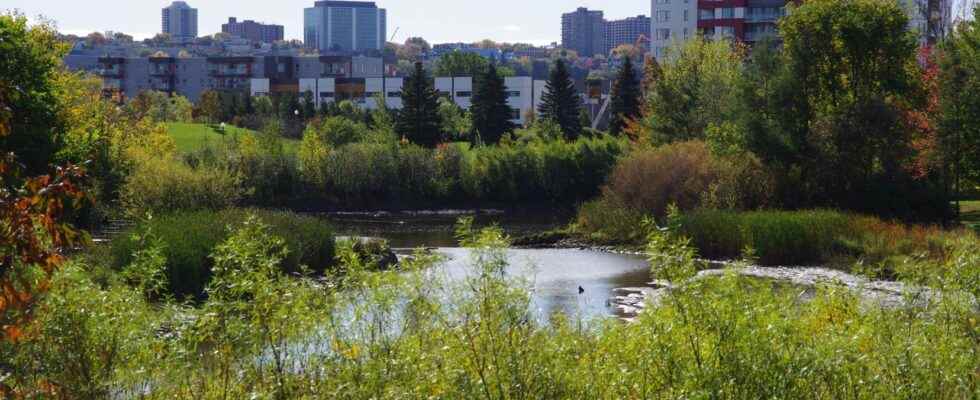This text is part of the special Environment section
Choosing to settle in a place close to work and shops has a significant impact: reduction in transport time and urban sprawl, better management of resources, more local services, protection of remaining natural spaces.
“The biggest advantage of living close to everything is the shorter trips,” observes Catherine Boisclair, land use planning and urban planning coordinator at Vivre en Ville. Choosing the right place to live makes it possible to reduce transport time to work, shops or leisure; an important variable, in a context where transport is one of the categories where we can most improve our energy footprint. “When a friend hesitates between two places to live, I make him a personal travel plan. Where are you going to do your grocery shopping? People don’t think about that,” says M.me Clear wood.
Being close to everything means having access to different options: walking, cycling, public transport. “It gives us access to a cocktail of transport”, continues the town planner, who recalls that the choice of mode of transport is directly linked to the distance to be covered. In addition to considering his personal travels, we can think of those of his children and visitors. For example, it has been shown that if children walk to school, it helps to develop their autonomy.
Protect green spaces
Choosing a densified living environment also means participating in the protection of nature, by helping to curb the demand for housing further and further away and our consumption of resources. “Territory is a natural resource,” notes Catherine Boisclair.
“Even today, the development of the city follows a very demanding model in terms of land use. We need to review our ways of developing cities,” says Jérôme Dupras, professor of ecological economics at the Université du Québec en Outaouais. Eating more and more of agricultural land, wetlands and forest environments is no longer an option.
In addition to protecting, it is essential to restore ecological environments, around and in the center of living environments, and to interconnect them. “Faunal and floristic biodiversity must be able to circulate in space,” explains Mr. Dupras. These ecological corridors, which can take various forms, from green alleys to interconnected woodlands, including bicycle paths, are useful for the active movement of humans.
In the city, greening is not just a matter of trees: from the flower bed to the green alley, each level of greening counts. The densification must be accompanied by a strategy of public spaces and parks, which the populations will be able to appropriate. At the individual level, we can change the asphalt for honeycomb paving or diversify the monoculture of the lawn by integrating diversified plants. In addition to providing a better quality of life, greening plays a role in reducing heat islands, improving air quality and managing rainwater.
Individual choice, collective influence
But for us to be able to choose these interesting living environments, they still have to be offered. However, these ways of rethinking the city are interesting for municipalities.
“The more we spread out, the more the infrastructure needs increase, as do the costs,” recalls Sylvain Gariépy, president of the Ordre des urbanistes du Québec. Densification allows cities to have more revenue, since taxpayers are concentrated there, which makes it possible to offer more services and make them profitable more quickly.
This collective choice of proximity is not just a fad, and densifying is not just for the big city. “We are not talking about sticking people. We must adapt the approaches”, nuance Mr. Gariépy.
No question of planting large residential towers everywhere; Densification is rather building the city on top of the city: former industrial wastelands, underused parking lots, soft densification by authorizing the addition of secondary buildings on the land. Multigenerational homes, for example, increase densification without it being visible. “It allows you to stay in the city where you grew up, and lived all your life, even as you get older,” believes Mr. Gariépy.
The densification must be progressive, and the solutions, modulated according to the places, all in consultation. Those who are already established in the heart of the city may indeed be concerned about the change in landscape that densification entails. But this arrival of new neighbors is positive. “You have to consider everything that densification allows: it’s an opportunity for the city to offer more,” concludes Mr. Gariépy.
